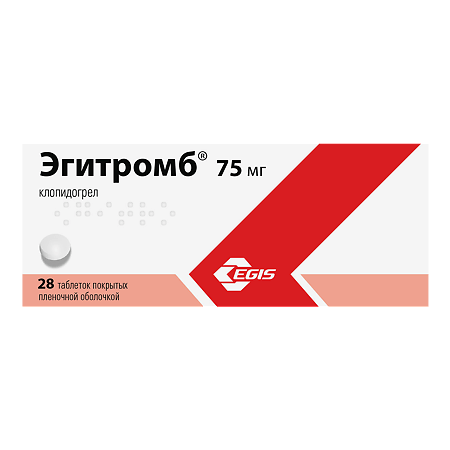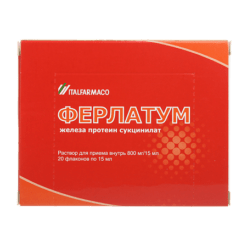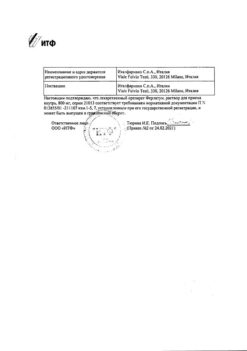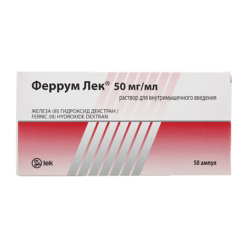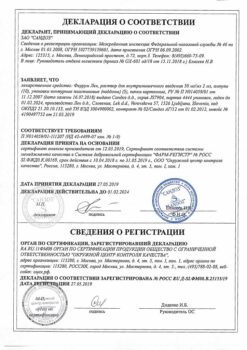No products in the cart.
Egithromb, 75 mg 28 pcs
€20.10 €17.42
Description
Pharmacodynamics
Egithromb is an antiplatelet agent. Specific and active inhibitor of platelet aggregation. Selectively decreases binding of adenosine diphosphate (ADP) to receptors on platelets and activation of GPI IIb/IIIa receptors by ADP, thus weakening platelet aggregation.
Decreases platelet aggregation caused by other agonists by preventing their activation by released ADP, does not affect phosphodiesterase (PDE) activity. It binds irreversibly to platelet ADP receptors, which remain immune to ADP stimulation during the life cycle (about 7 days). Inhibition of platelet aggregation is observed 2 h after administration (40% inhibition) of the initial dose. The maximum effect (60% suppression of aggregation) develops after 4-7 days of continuous administration at a dose of 50-100 mg/day. The antiaggregant effect persists for the entire period of platelet life (7-10 days). In the presence of atherosclerotic vascular lesions it prevents the development of atherothrombosis regardless of the localization of the vascular process (cerebrovascular, cardiovascular or peripheral lesions).
Pharmacokinetics
Clopidogrel is rapidly absorbed after repeated administration of 75 mg per day. Bioavailability is high. However, the concentration of the initial substance in plasma is low and already after 2 hours does not reach the limit of measurement (0.025 mcg/L). The binding to plasma proteins is 98-94%.
It is metabolized in the liver. The main metabolite is inactive carboxylic acid derivative, TCmax of which after repeated oral doses of 75 mg is reached after 1 hour (Cmax – about 3 mg/L). It is excreted by the kidneys – 50% and through the intestine with feces – 46% (within 120 hours after administration). T½ of the main metabolite after single and repeated administration is 8 hours.
Concentrations of metabolites excreted by the kidneys are 50%. Plasma concentrations of the main metabolite after 75 mg/day administration are lower in patients with severe kidney disease (CK of 5-15 ml/min) compared to patients with moderate kidney disease (CK of 30 to 60 ml/min) and healthy individuals.
Indications
Indications
Prevention of thrombotic complications in patients with myocardial infarction, ischemic stroke or peripheral arterial occlusion;
For the prevention of thrombotic complications in acute coronary syndrome in combination with acetylsalicylic acid (ASA): with ST segment elevation if thrombolytic therapy is possible; without ST segment elevation (unstable angina, myocardial infarction without Q wave), incl. in patients undergoing stenting.
Pharmacological effect
Pharmacological effect
Pharmacodynamics
Egitromb is an antiplatelet agent. Specific and active inhibitor of platelet aggregation. Selectively reduces the binding of adenosine diphosphate (ADP) to platelet receptors and the activation of GPI IIb/IIIa receptors by ADP, thereby weakening platelet aggregation.
Reduces platelet aggregation caused by other agonists, preventing their activation by released ADP, does not affect phosphodiesterase (PDE) activity. Irreversibly binds to platelet ADP receptors, which remain resistant to ADP stimulation throughout the life cycle (about 7 days). Inhibition of platelet aggregation is observed 2 hours after administration (40% inhibition) of the initial dose. The maximum effect (60% suppression of aggregation) develops after 4-7 days of continuous use at a dose of 50-100 mg/day. The antiplatelet effect persists throughout the life of platelets (7-10 days). In the presence of atherosclerotic lesions of the vessel, it prevents the development of atherothrombosis, regardless of the localization of the vascular process (cerebrovascular, cardiovascular or peripheral lesions).
Pharmacokinetics
Clopidogrel is rapidly absorbed after repeated doses of 75 mg per day. Bioavailability is high. However, the concentration of the original substance in plasma is low and after 2 hours does not reach the measurement limit (0.025 μg/l). Communication with plasma proteins – 98-94%.
Metabolized in the liver. The main metabolite is an inactive derivative of carboxylic acid, the TCmax of which after repeated oral doses of 75 mg is reached after 1 hour (Cmax is about 3 mg/l). Excreted by the kidneys – 50% and through the intestines with feces – 46% (within 120 hours after administration). T½ of the main metabolite after a single and repeated dose is 8 hours.
Concentrations of metabolites excreted by the kidneys are 50%. The concentration of the main metabolite in plasma after taking 75 mg/day is lower in patients with severe kidney disease (creatinine clearance 5-15 ml/min) compared to patients with moderate kidney disease (creatinine clearance 30 to 60 ml/min) and healthy individuals.
Special instructions
Special instructions
During the treatment period, it is necessary to monitor the indicators of the hemostatic system (APTT, platelet count, platelet functional activity tests); regularly examine the functional activity of the liver. Clopidogrel should be used with caution in patients at risk of increased bleeding due to trauma, surgery, in patients with injuries prone to bleeding (especially gastrointestinal and intraocular), as well as in patients receiving ASA, non-steroidal anti-inflammatory drugs (including COX-2 inhibitors), heparin or glycoprotein IIb/IIIa inhibitors. Patients should be closely monitored for any signs of bleeding, including occult bleeding, especially during the first weeks of drug use and/or after invasive cardiac procedures or surgery. The simultaneous use of clopidogrel and warfarin is not recommended, as it may increase bleeding.
In the case of surgical interventions, if the antiplatelet effect is undesirable, the course of treatment should be discontinued 7 days before surgery.
Patients should be warned that since stopping bleeding that occurs during the use of clopidogrel (in combination with or without ASA) requires more time, they should report to the doctor any case of unusual bleeding. Patients should also inform their doctor about taking the drug if they are undergoing surgery and before taking any new drug.
Thrombotic thrombocytopenic purpura (TTP) has been reported very rarely after taking clopidogrel, sometimes after short-term use. This condition is characterized by thrombocytopenia and microangiopathic hemolytic anemia in combination with neurological signs, renal dysfunction or fever. TTP is a potentially fatal condition that requires immediate treatment, including plasmapheresis. Due to lack of data, clopidogrel cannot be recommended for acute (less than 7 days) ischemic strokes. Experience with the use of clopidogrel in patients with impaired renal function is limited, so clopidogrel should be prescribed to these patients with caution. In case of severe liver dysfunction, the risk of developing hemorrhagic diathesis should be remembered; experience with the drug in patients with moderate liver dysfunction is limited, so clopidogrel should be prescribed to these patients with caution. Ability to drive vehicles Clopidogrel does not affect or slightly affects the ability to drive vehicles and operate machinery.
Active ingredient
Active ingredient
Clopidogrel
Composition
Composition
1 film-coated tablet contains:
active ingredient:
clopidogrel hydrosulfate 97.86 mg (in terms of clopidogrel – 75 mg);
excipients:
microcrystalline silicon cellulose (MCC, colloidal anhydrous silicon dioxide);
hyprolose (low degree of substitution (L-HPC B1);
hydrogenated castor oil;
Opadry white Y-I-7000 (hypromellose, titanium dioxide, macrogol 400)
Pregnancy
Pregnancy
Due to the lack of clinical data on the use of the drug in pregnant women, clopidogrel should not be prescribed during pregnancy.
There is no information about its excretion into breast milk in humans, therefore the use of the drug during lactation is contraindicated.
Contraindications
Contraindications
hypersensitivity to the active or any auxiliary component of Egithromb;
severe liver failure;
active pathological bleeding (peptic ulcer or intracranial hemorrhage);
pregnancy and lactation (see section “Pregnancy and lactation”);
age under 18 years (efficacy and safety have not been proven).
With caution: moderate liver failure, chronic renal failure (CRF), pathological conditions that increase the risk of bleeding (including trauma, surgery), simultaneous use of ASA, NSAIDs (including COX-2 inhibitors), heparin and glycoprotein IIb/IIIa receptor inhibitors
Side Effects
Side Effects
From the central nervous system: uncommon: headache, dizziness and paresthesia; rare: systemic dizziness; very rarely: confusion, hallucinations, taste disturbances.
From the gastrointestinal tract: frequent: gastrointestinal bleeding, diarrhea, abdominal pain, dyspepsia; uncommon: hemorrhagic stroke, gastric ulcer, duodenal ulcer, gastritis, nausea, vomiting, constipation, bloating; very rare: pancreatitis, colitis (including ulcerative or lymphocytic colitis), stomatitis, acute liver failure, hepatitis.
From the cardiovascular system and hematopoietic system: common: hematoma; Uncommon: increased bleeding time and decreased platelet count (thrombocytopenia), leukopenia, neutropenia and eosinophilia; very rare: vasculitis, hypotension, thrombotic thrombocytopenic purpura (TTP) (1/200,000 patients taking the drug) (see section “Special instructions”), severe thrombocytopenia (platelet count ≤30 x 109/l), agranulocytosis, granulocytopenia, aplastic anemia/pancytopenia, anemia.
From the skin: uncommon: allergic reactions (skin rash), itching; very rare: angioedema, bullous dermatitis (erythema multiforme, Stevens-Johnson syndrome, toxic epidermal necrolysis), erythematous rash, urticaria, eczema and lichen planus.
From the respiratory system: very rarely: bronchospasm, interstitial pneumonitis. Other: very rare: arthralgia, arthritis, myalgia, anaphylactoid reactions, serum sickness, fever, abnormal liver function tests, increased blood creatinine, glomerulonephritis.
Interaction
Interaction
It enhances the antiplatelet effect of acetylsalicylic acid, heparin, thrombolytics, indirect anticoagulants, nonsteroidal anti-inflammatory drugs (NSAIDs), and increases the risk of bleeding from the gastrointestinal tract, so the simultaneous use of these drugs requires caution.
Clopidogrel should be used with caution in patients who may be at risk of increased bleeding from trauma or surgery when taking glycoprotein IIb/IIIa inhibitors concomitantly.
The simultaneous use of clopidogrel and warfarin is not recommended, as it may increase bleeding (see also section “Special instructions”). No clinically significant pharmacodynamic interactions were found in cases of simultaneous use of clopidogrel with atenolol, nifedipine or a combination of atenolol with nifedipine. In addition, the pharmacodynamic activity of clopidogrel was not significantly altered by concomitant use of phenobarbital, cimetidine, or estrogens. The pharmacokinetics of digoxin or theophylline did not change with simultaneous administration of clopidogrel. Antacids do not affect the absorption of clopidogrel. A study of human liver microsomes showed that a carboxylic acid metabolite of clopidogrel can inhibit the activity of cytochrome P450 2C9. This may increase plasma levels of drugs such as phenytoin, tolbutamide and NSAIDs, which are metabolized by cytochrome P450 2C9. Phenytoin and tolbutamide can be used safely with clopidogrel.
Overdose
Overdose
An overdose of clopidogrel may prolong bleeding time and lead to bleeding complications. If bleeding is detected, appropriate treatment should be prescribed.
No antidotes have been found for the pharmacological activity of clopidogrel. If rapid reduction of prolonged bleeding time is needed, platelet transfusion may reverse the effects of clopidogrel.
Storage conditions
Storage conditions
At a temperature not exceeding 25 °C
Shelf life
Shelf life
5 years
Manufacturer
Manufacturer
EGIS, Hungary
Additional information
| Shelf life | 5 years |
|---|---|
| Conditions of storage | At a temperature not exceeding 25 °C |
| Manufacturer | EGIS, Hungary |
| Medication form | pills |
| Brand | EGIS |
Related products
Buy Egithromb, 75 mg 28 pcs with delivery to USA, UK, Europe and over 120 other countries.

